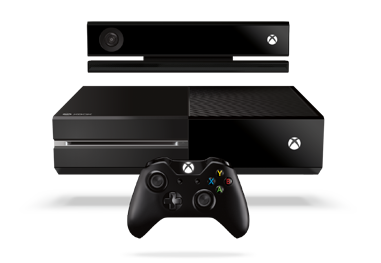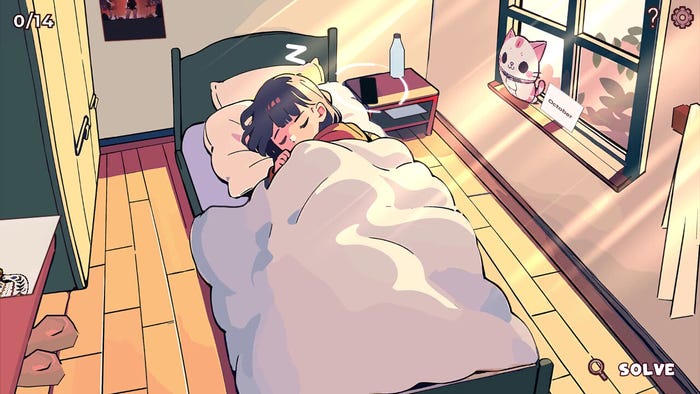
Featured Blog | This community-written post highlights the best of what the game industry has to offer. Read more like it on the Game Developer Blogs.
Xbox One: a flawed plan, well executed
The Xbox One misses the mark because it is the culmination of a strategy formulated in the 1990s. It is a weapon to win the battle of the living room, when the real battle is for the personal screen.

There is a famous (unfortunately apocryphal) psychological experiment involving ten monkeys, a banana and ice cold water.
Five of the monkeys were placed in a cage with a banana at the top of some steps in a corner. One monkey heads for the banana and gets doused with ice cold water. So do the other monkeys. The next time a monkey goes for the banana, the others, remembering the ice shower, restrain him.
Now one monkey is taken out and a new, naive monkey added. He sees the banana, runs for it, and the other four monkeys stop him forcibly. Gradually every monkey who has experienced the ice cold shower is removed and replaced by one who has not. Eventually, not one of the monkeys in the cage has ever experienced the ice water. A new monkey is added and goes for the banana. He is attacked. No monkey knows why, but “that’s not how we do things around here”.
I fear that senior Microsoft executives are those monkeys, carrying on a strategy while losing sight of why they were trying to do it in the first place.
Why the Xbox even exists
Three years ago, I wrote these words as part of a proposal for a book on why the console era is coming to an end.
“[The Xbox is part of a] grandiose strategy. Microsoft built its dominance through the ubiquity of its operating systems on PCs. Initially with DOS, and subsequently with Windows, the company established itself as the platform for users and developers. Now it is vying to control access to information from the living room. Three pieces of hardware have long been perceived as potential winners in this battle: the PC, the video game console and the satellite/cable set-top box. Microsoft already dominates the PC market. In 1997, it invested $1 billion in a 7.3% stake in Comcast, the US cable company, in an attempt to build a “Windows-based gateway to the television [although it subsequently sold it]. And the Xbox is designed to cover the third potential route to the market, to make sure that whichever of the three pieces of hardware win the battle, Microsoft has a place at the table.”

Against that background, the Xbox One reveal makes sense. It was all about following that grand strategy of owning the living room. The focus on television ahead of games makes sense if the job of the Xbox One is to own the living room. Yet the strategy that Microsoft seems to be following (TV! Sports! Space!) seems misguided, both tactically and strategically.
Tactically, Microsoft needs to get an installed base fast. To do that, you need a product that solves a need. The problem the Xbox One solves best is a gaming one: “how can I play great games on my 42” screen?” The other problems it solves (“how do I control my television with my voice?”, “how do I stream television content through the same box I play my games on?”) are not problems that consumers know they have, so they are unlikely to rush out to spend several hundred dollars to solve them. The Xbox 360 was a games device first and foremost, yet more than half of the time spent on the console is now spent consuming other media. Score one for the Trojan Horse tactic. That’s why it seems so odd that Microsoft have abandoned the tactic so well in the last generation.
But the real problem with the Xbox One is about the strategy, not the tactics.
Xbox One is a 1990s strategy
The Xbox One is the latest step in a strategy conceived in the 1990s. The ambition was to control the living room. That seemed like a laudable objective back when the world seemed likely to be heading towards bigger, more dominant, more impressive screens in every room of every house.
That’s not what’s happening any more.
Since Bill Gates first set out the control-the-living-room strategy, two things have upended the old order. Firstly, all of us have a powerful computer within 5 feet of us at every hour of every day. The smartphone has altered how we consume content . The second is the emergence of the tablet as a media consumption device.
Smartphones and tablets are often called the second screen. I think we can expect that to flip over time. The first screen, the screen we turn to first, the screen that is personal and connected to us, will be a portable, personal screen. It will be a phone or a tablet or both. Households will still have huge TV screens for sports events, for shared TV experiences, for HD gaming. But instead of the future being that every room in the house will have a screen, it is that every person in the house will have a screen. The future battle is not for the control of the living room: it is for control of the direct relationship between creator and consumer via this personal screen.
It’s like Microsoft is fighting to be the person who controls the fixed line phone in an age of mobile telephony.
Corporations versus startups
I am a big fan of The Lean Startup by Eric Ries. One of the most depressing things an advocate of the Lean Startup approach can watch is a talented team executing flawlessly against a plan chock-full of wrong assumptions. Entrepreneurialism is about figuring out how to adapt your plans rapidly to changing information. Bill Gates was an entrepreneur. I fear that no one left at Microsoft is. They are executing against a 15 year old strategy that assumes that the living room is at the heart of where value lies for content consumption in the twenty-first century.
I’m not saying that HD experiences have no place. Far from it. But I am saying that Microsoft is fighting a three-way battle for the living room against set-top boxes and the PC. Meanwhile, two other contenders - the phone and the tablet – have waltzed in and said “Hey, you guys. That’s fine. You go and spend billions of dollars on controlling the living room. We’ll sit that fight out. Instead, we’ll build a strong, personal relationship (complete with one-click purchasing) with every consumer on the planet. You can have the rooms. We’ll have the people.”
The assorted criticism of the Xbox One from the web (“we didn’t see the games”, “MS doesn’t care about indies”, “it’s all about telly”, “it’s all about the US”, “it’s all about 15-34 white male Americans”) are all part of the same story. Microsoft is fighting to control the living room. It might yet win.
And then it will stop. Look around at a living room filled with four family members each engrossed in their own personal device, buying and sharing and playing and watching, glancing up occasionally at the big screen.
And they will realise that a strategy forged in the late 1990s might not be so relevant in 2013.
Read more about:
Featured BlogsAbout the Author(s)
You May Also Like









